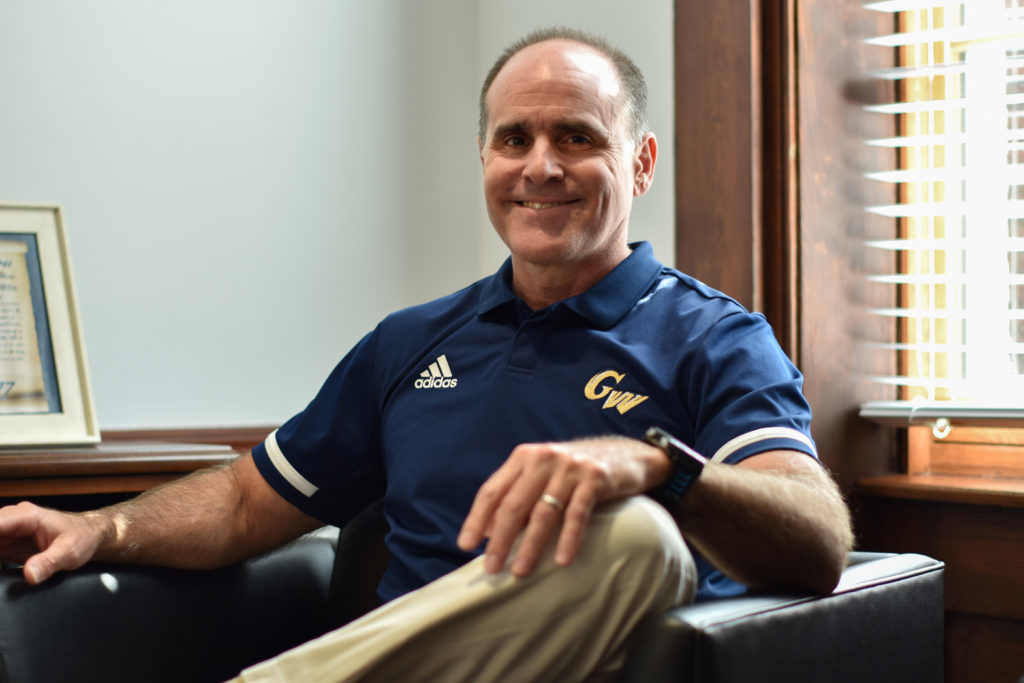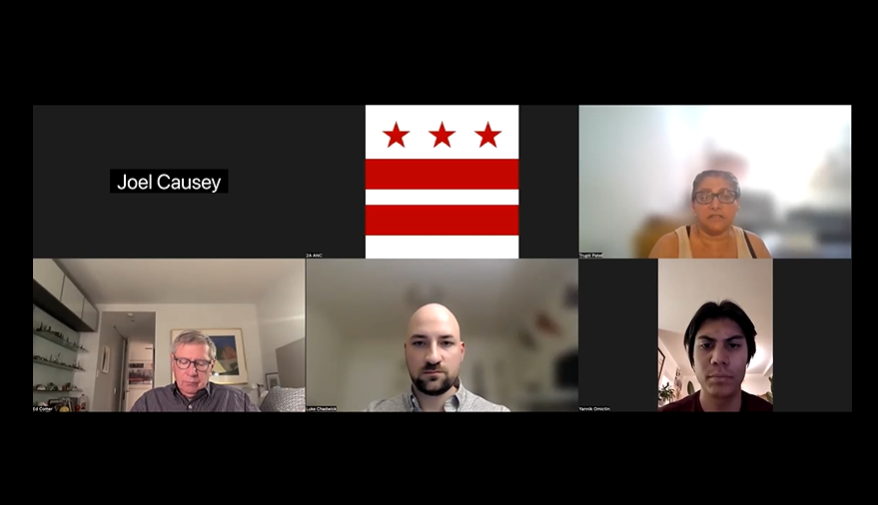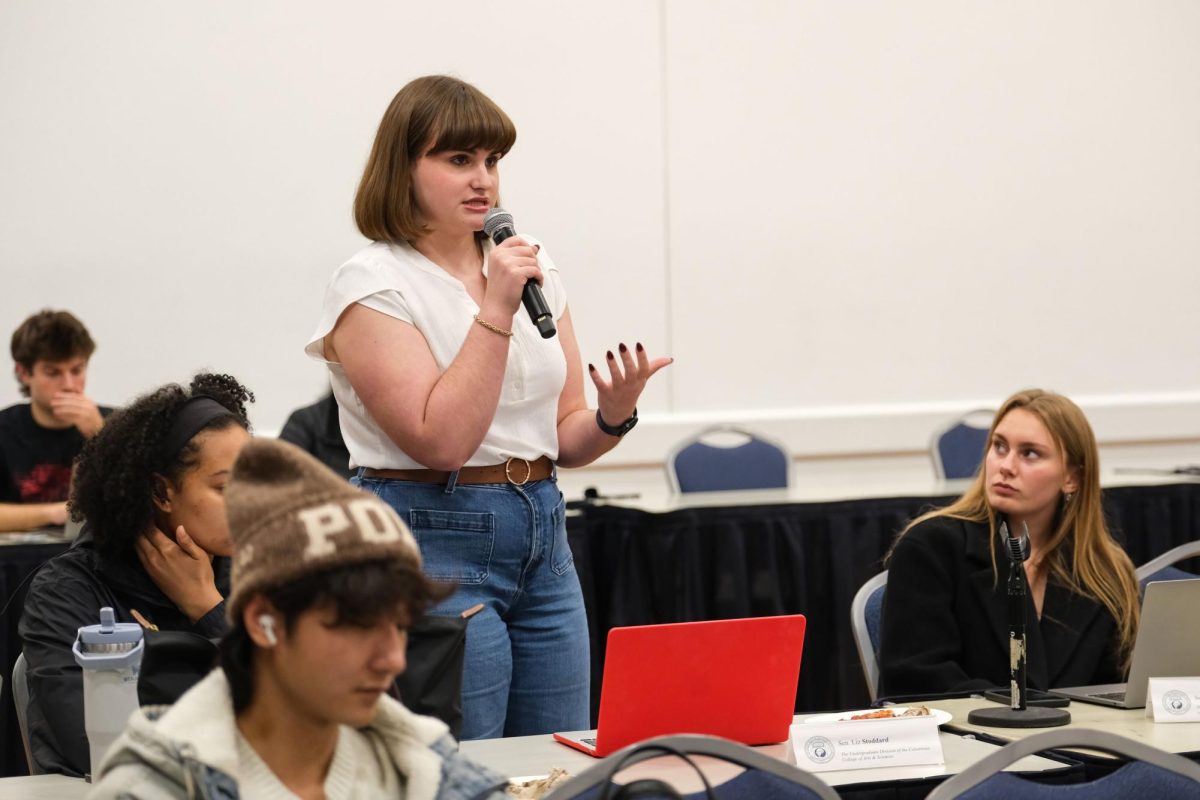After noting several maintenance issues around campus – like the psychology department’s sewage overflow in May and the Smith Center scoreboard falling last September – Mark Diaz sought to document problems apparent in nearly every GW building.
Diaz, the University’s executive vice president and chief financial officer, embarked on a tour of the Foggy Bottom and Mount Vernon campuses, jotting down issues ranging from inadequate lighting on the Vern to faulty cooling systems.
That tour led to a $10 million commitment this summer from the Board of Trustees to complete “urgent” improvements on campus, what Diaz called an ongoing commitment to make campus “better and safer.”
Diaz said the initiative – his last major project as he closed out his first year at GW – led to 100 improvements across campus, from repainting railings to updating community spaces. He helped restructure the medical enterprise, spearhead efforts to improve institutional culture and address campus safety issues in his first year, Diaz said.
“I think it’s safe to say I didn’t have much of a honeymoon period,” he said. “I think on literally my first day, Aug. 1, we jumped into the deep end of the pool.”
University President Thomas LeBlanc said Diaz brings a “broad skillset” and has worked to understand GW’s resource base and improve its leadership structure. Diaz has brought “transformative” change to GW through his initiatives, LeBlanc said.
“I think it’s remarkable how much impact he’s been able to have done so quickly,” he said.
Rethinking the organization’s structure
When Diaz arrived at GW, he inherited economic challenges like ongoing budget cuts. Diaz said he has worked to change the “paradigm” around financial planning so that officials are not constantly reacting to fiscal challenges.
He hired Jared Abramson as the inaugural vice president for financial planning and operations in July to oversee financial forecasting and analysis.
“He’s coming right at the right time – at the beginning stages of the strategic planning process, as well as the budget cycle,” Diaz said.
Diaz also hired a slate of new officials who directly report to him in the finance, tax and business divisions in January to “ensure greater coordination and collaboration” between top administrators. The hires included a new University controller to head GW’s accounting efforts and a new associate vice president for total rewards to manage employee compensation.
Diaz also created a new position – a chief people officer – to oversee human resources and hired Dana Bradley to oversee a “major reorientation” of the department. He promoted the position in the hierarchy to report directly to him, which he said will elevate staff concerns to “upper levels of leadership.”
Diaz established an Office of Ethics, Compliance and Privacy, led by Dorinda Tucker, in February to monitor the University’s efforts on those fronts, oversee enterprise risk management and manage GW’s conflict of interest policies.
“The governance change made a difference as to how we value and view that part of the organization,” Diaz said.
LeBlanc said Diaz has improved employee culture by empowering his teams while building accountability by holding other officials to deadlines.
“We want people to be empowered and accountable,” LeBlanc said. “If you have an organization where nobody feels responsible and nobody feels accountable, then nothing gets done.”
Advancing strategic initiatives
Diaz has helped lead two of LeBlanc’s five strategic initiatives – the medical enterprise and institutional culture – in his first year.
Diaz said he spent a “lion’s share” of his first five months improving the University’s medical enterprise, which includes the Medical Faculty Associates, School of Medicine and Health Sciences and the GW Hospital.
Diaz helped restructure the relationship between GW and the MFA in December, granting officials greater decision-making responsibilities while maintaining the MFA’s independence. Diaz said the changes comport with LeBlanc’s strategic initiative to “better” align the two groups and bring the MFA back “into the family.”
“He really couldn’t see attaining preeminence without a preeminent medical school,” Diaz said. “We couldn’t see a preeminent medical school without high performing physicians – an academic physician practice group.”
Diaz also serves as the sponsor for LeBlanc’s institutional culture strategic initiative. He leads the Culture Leadership Team – a group of faculty and administrators working on the initiative – which has developed an aspirational statement and values, overseen four work teams and created an ambassador team to lead in-person training sessions this fall.
Diaz said improving culture is a “marathon” but added that his team has developed a common purpose statement and three service priorities – safety, care and efficiency – to set the framework for a less “transactional” culture.
“Faculty and staff – are they employees of GW or employees of the department of X?” he said. “Unfortunately, I think we have a little bit of the latter. And we’re trying to see if we can get to the former.”
Improving safety and accessibility
Administrators have completed more than 100 infrastructure projects as a result of Diaz’s summer campus walk. Officials announced last month that 250 projects were still in progress and more than 200 additional improvement areas have been identified.
Scott Burnotes, the new associate vice president for safety and security who Diaz hired in June, announced earlier this month that officials will provide electronic tap access to all residence halls and select academic spaces, which Diaz said will allow security staff to remotely lock down buildings.
“We’re all thinking about safety and security and what it can become, especially not only for the obvious reasons, but in terms of enhancing the student experience,” Diaz said.
Provost Forrest Maltzman, who announced in April that he will step down from his role and take a sabbatical before returning to GW as a professor, said Diaz’s initiatives have caused a “dramatic improvement” in campus safety.
“You see it when you walk across the campus,” Maltzman said. “Recently, they’ve been focusing on creating student space, which I think has been very helpful.”
Board of Trustees Chair Grace Speights said the initial $10 million in funding for Diaz’s projects is just the beginning, and the board will likely approve funding for additional campus improvements during this academic year.
“The number we probably could have and would have approved was more, but there’s a limited amount that can get done during the summer,” Speights said. “So Mark came to us with the things that he thought were most urgent.”
Diaz said he has also talked with Student Association leadership on improving accessibility in University spaces.
“We want to make sure that as we act, we’re serious about students and doing right by the students,” he said.
SA President SJ Matthews said student leaders recently presented a report to Diaz with recommendations to improve classroom accessibility, which Diaz said coincides with his staff’s work on accessibility.
“That’s been really encouraging to see – that there is a large commitment from the administration to improving the student experience, not just for the first few years, but for all students,” Matthews said.
She said her conversations with Diaz have been “great” because he has consistently met with student leaders and is “willing to work” to address their concerns.
“Our meetings are always a lot of fun, because we’ll come up with these great ideas, and he’ll just say, ‘Alright, let’s do it,’” Matthews said.
Ilena Peng, Jared Gans and Parth Kotak contributed reporting.





